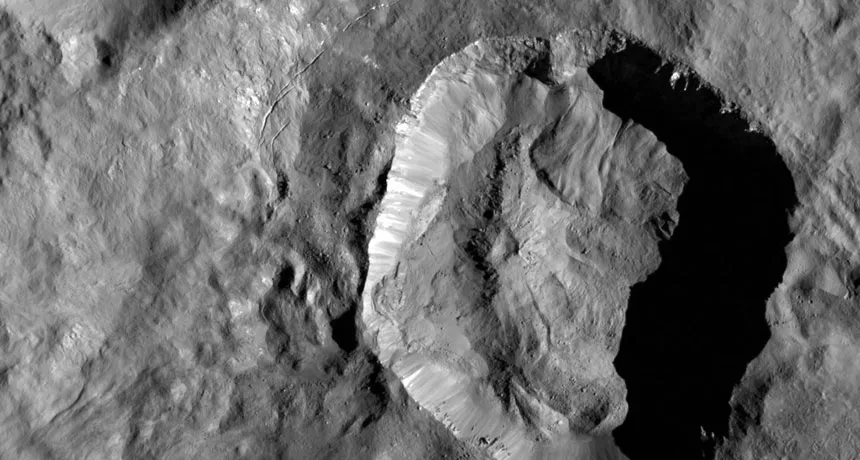Dwarf planet Ceres may store underground brine that still gushes up today
Waterlogged minerals and changing ice add to evidence that Ceres is geologically active

FOLLOW THE ICE A wall of ice in the shadows of Ceres’ Juling crater, shown here in an image taken by NASA’s Dawn spacecraft, grew by about 50 percent over the course of six months.
JPL-Caltech/NASA, UCLA, MPS, DLR, IDA